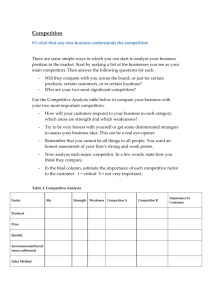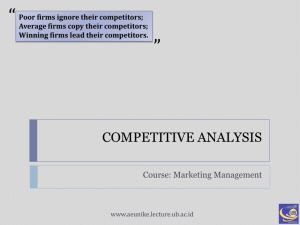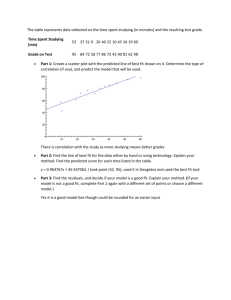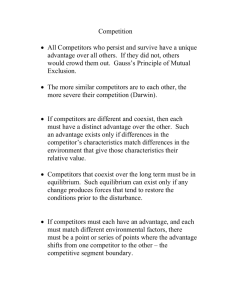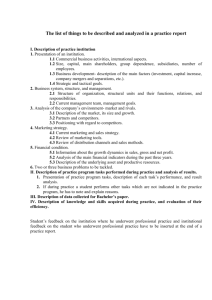Market Dynamics & Competitive Strategies
advertisement
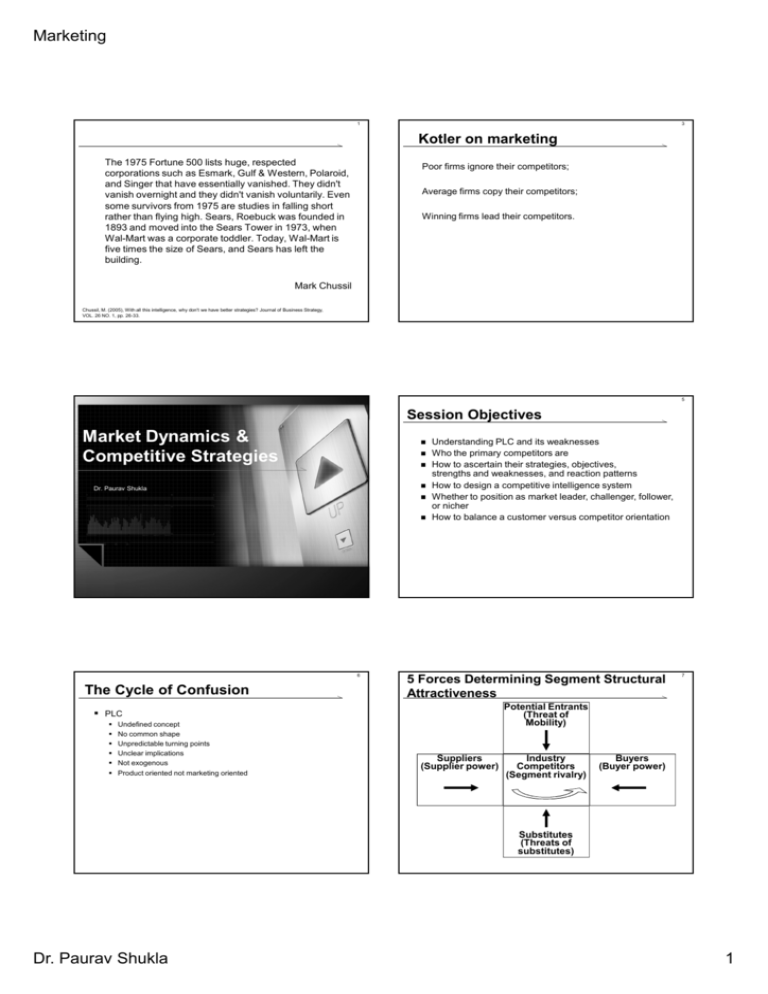
Marketing 1 3 Kotler on marketing The 1975 Fortune 500 lists huge, respected corporations such as Esmark, Gulf & Western, Polaroid, and Singer that have essentially vanished. They didn't vanish overnight and they didn't vanish voluntarily. Even some survivors from 1975 are studies in falling short rather than flying high. Sears, Roebuck was founded in 1893 and moved into the Sears Tower in 1973, when Wal-Mart was a corporate toddler. Today, Wal-Mart is five times the size of Sears, and Sears has left the building. Poor firms ignore their competitors; Average firms copy their competitors; Winning firms lead their competitors. Mark Chussil Chussil, M. (2005), With all this intelligence, why don't we have better strategies? Journal of Business Strategy, VOL. 26 NO. 1, pp. 26-33. 5 Session Objectives Market Dynamics & Competitive Strategies Dr. Paurav Shukla 6 The Cycle of Confusion Understanding PLC and its weaknesses Who the primary competitors are How to ascertain their strategies, objectives, strengths and weaknesses, and reaction patterns How to design a competitive intelligence system Whether to position as market leader, challenger, follower, or nicher How to balance a customer versus competitor orientation 5 Forces Determining Segment Structural Attractiveness Potential Entrants (Threat of Mobility) PLC Undefined concept No common shape Unpredictable turning points Unclear implications Not exogenous Product oriented not marketing oriented 7 Suppliers (Supplier power) Industry Competitors (Segment rivalry) Buyers (Buyer power) Substitutes (Threats of substitutes) Dr. Paurav Shukla 1 Marketing 8 9 Barriers and Profitability Itemising marketing assets Exit barriers Customer based assets Relationship with customers Company name and reputation Brands Country of origin Market domination Superior products and services Supply chain assets Internal support assets Distribution networks & relationships Distribution control Pockets of strength Distribution uniqueness Security of supply Supplier network & relationships Cost advantages Information systems Technical skills, Production expertise Copyrights and patents Franchises and licences Partnerships Marketing Assets Alliance based assets Access to markets Access to management skills Shared technology Exclusivity Entry Barriers Low High Low Low, stable returns Low, risky returns High High, stable returns High, risky returns Adapted from Hooley, G.; Saunders, J.; Piercy, N. (2004),Marketing strategy and competitive positioning, FT Prentice Hall, p. 158 10 Identifying Competitors Identifying Competitors 11 Industry Concept of Competition Number of Sellers and Degree of Differentiation Cost Structure Degree of Vertical Integration Degree of Globalization Monopolistic competition Pure competition Capital, Patents, Location, Relationships, Channel, Reputation Legal or moral obligation, Govt. restriction, Lack of alternatives, Emotional barriers Pure monopoly Oligopoly Pure oligopoly Differentiated oligopoly Entry, Mobility, Exit Barriers Industry Vertical integration Market Concept of Competition 12 Competitor Map – Eastman Kodak 13 Analyzing Competitors Objectives Strategies Competitor Actions Reaction Patterns Dr. Paurav Shukla Strengths & Weaknesses 2 Marketing 14 15 Analyzing Competitors Analyzing Competitors Objectives Strategies : The Appliance Industry Understanding Competitors Expansion Plans Group A High •Narrow line Group C •Moderate line •Medium mfg. cost •Medium service •Medium price Group B •Full line •Low mfg. cost •Good service •Medium price Products Quality •Lower mfg. cost •Very high service •High price Group D •Broad line •Medium mfg. cost •Low service •Low price Low High Personal Computers Markets Individual Commercial & Industrial Educational Users Dell Hardware Accessories Software Low Vertical Integration 16 Analyzing Competitors 17 Analyzing Competitors Strengths and Weaknesses Dominant Three Variables to Monitor When Analyzing Competitors: Strong Share of market Share of mind Share of heart Favourable Tenable Weak Nonviable 18 Analyzing Competitors 19 Designing Competitive Intelligence System Reaction Patterns Major Steps in Customer Value Analysis: 1. 2. The Laid-Back Competitor 3. The Selective Competitor 4. The tiger Competitor The stochastic Competitor 5. Identify the major attributes customers value. Assess the quantitative importance of the different attributes. Assess the companies’ and competitors’ performances on the different customer values against their rated importance. Examine how customers in a specific segment rate the company’s performance against a specific major competitor on an attribute-by-attribute basis. Monitor customer values over time. Bachmann, J. (2002), Competitive strategy: It's O.K. to be different, Academy of Management Executive, May, 16 (2), pp. 61-67. DeSarbo, W. S., K. Jedidi, and I. Sinha (2001), "Customer value analysis in a heterogeneous market," Strategic Management Journal, 22 (9), 845-57. Stahl, M. J., W. K. Barnes, S. F. Gardial, W. C. Parr, and R. B. Woodruff (1999), "Customer-value analysis helps hone strategy," Quality Progress, 32 (4), 53-58. Dr. Paurav Shukla 3 Marketing 20 21 Hypothetical Market Structure & Strategies Customer Lifetime Value Average transaction value x Yearly frequency of purchase x Customer life expectancy Market leader Market challenger 40% Expand Market Defend Market Share 30% Market nicher Market follower 20% Attack leader Status quo Imitate 10% Specialize Expand Market Share Gupta, S., Donald Lehmann & Jennifer Stuart (2004), Valuing Customers, Journal of Marketing Research 22 Defense Strategies 23 Attack Strategies (2) Flank defense (4) Bypass attack (2) Flank attack Attacker (3) Preemptive defense (4) Counteroffensive defense (1) Position (6) Contraction defense defense (1) Frontal attack Attacker Defender Defender (3) Encirclement attack (5) Mobile defense (5) Guerilla attack 24 Specific Attack Strategies Price-discount Cheaper goods Prestige goods Product proliferation Product innovation Improved services Distribution innovation Manufacturing cost reduction Intensive advertising promotion Dr. Paurav Shukla 25 “Nichemanship” End-user specialist Vertical-level specialist Customer-size specialist Specific-customer specialist Geographic specialist Product or product-line specialist Product-feature specialist Job-shop specialist Quality-price specialist Service specialist Channel specialist 4

